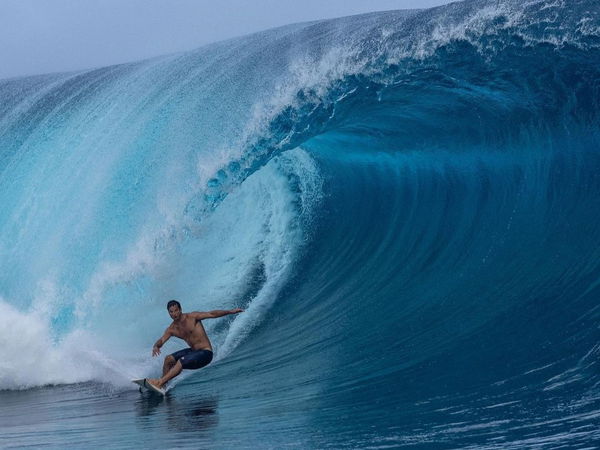

History will be made at the Paris Olympics as surfers tackle the formidable waves of Teahupo’o, Tahiti. This iconic location has been a legendary surfing spot long before the Olympics embraced surfing. However, Teahupo’o is not just notable for being the farthest competition venue from the host city in Olympic history; it carries an intimidating reputation.
What sets surfing apart from other Olympic sports is its inherent unpredictability. While other sports enjoy controlled environments, the sea is a capricious arena, making Teahupo’o particularly unique among the world’s surfing spots. Tahitian surfing legend Michel Bourez underscores that these thrilling waves are also among the most terrifying.
“Teahupo’o is one of the best waves, and the scariest waves, you could ever surf. The people need to know that wave is really dangerous,” Bourez said while speaking to NBC. While the waves at the venue for the Olympics are massive, they are deceptive. “It’s really shallow. You can die out there. Teahupo’o can give you everything and take everything at the same time,” added Bourez.
ADVERTISEMENT
Article continues below this ad

Few understand the precarious nature of Teahupo’o’s swells better than Bourez. Nearly a decade ago, at the age of 38, he learned firsthand the dangers of these massive waves. While attempting to ride an 8 to 10-foot wave, Bourez endured “One of the worst wipeout(s),” of his career. The surfer broke his left hand and a vertebra and underwent surgery.
ADVERTISEMENT
Article continues below this ad
Earlier this month, former pro surfer Owen Wright voiced similar concerns. While the Aussie was excited about surfing’s second appearance in the Olympics, he worried that athletes might not have sufficient time to acclimate to Teahupo’o’s massive and unpredictable waves.
What’s your perspective on:
Are the Paris Olympics risking lives by choosing Tahiti for surfing? Is it worth the danger?
Have an interesting take?
What makes the 2024 Paris Olympics venue so unpredictable?
Teahupo’o, Tahiti, surrounded by the vast expanse of the South Pacific Ocean, features waves that build momentum after traveling hundreds of miles. The seabed and coral reefs transform these waves into massive walls of water. As these waves collide with the sharp and shallow reefs, they rise abruptly and in unpredictable patterns.
ADVERTISEMENT
Article continues below this ad
This makes each wave unique and spectacular. While this may be why Olympic organizers chose Teahupo’o, a fall at this iconic venue can have severe long-term repercussions. In April 2024, Michel Bourez shared on Instagram how his broken vertebra had caused him pain for nearly 10 years. “I just got myself a new disc and the surgery went well. I can finally lay down on my bed like a normal person without feeling pain,” wrote the surfing icon.
Despite the inherent dangers, hundreds of professional surfers navigate these iconic swells unscathed. Michel Bourez’s warning is not intended to frighten athletes or spectators but to highlight the high stakes at the 2024 Paris Olympics.
ADVERTISEMENT
ADVERTISEMENT
ADVERTISEMENT
ADVERTISEMENT


Are the Paris Olympics risking lives by choosing Tahiti for surfing? Is it worth the danger?